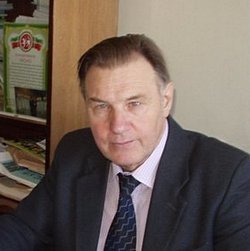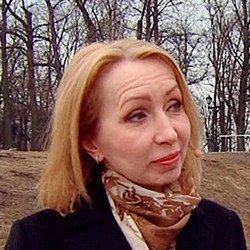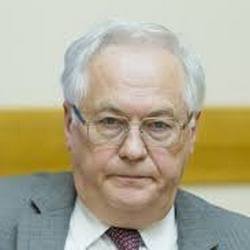‘This winter isn’t abnormally but extremely warm’
One shouldn’t make far-reaching conclusions, climatologists assume
A new temperature record was set in Kazan in 145 years of observations on 21 February — 4,2 degrees above zero. Also, there hasn’t been such a thin snow cover in the last 60 years here. The winter is coming to an end, but, in fact, it didn’t come. Russians aren’t glad about such a “European winter”, they are rather concerned: it is unclear what cataclysms such fluctuations of the natural balance will bring to humankind. Specialists assign the responsibility for this abnormality to a rapid western-eastern transition of air masses that isolated us from the Arctic and has stayed for all three months. Studying the reasons for the climatic shift, Realnoe Vremya learnt an accurate and the most long-term, half-a-century-old forecast of famous academician Mikhail Budyko.
For the first time in 145 years
Winter in the capital of Tatarstan set a temperature record last Thursday on 20 February in 130 years of observations of the meteorological station of the Kazan university — 3,4 degrees Celsius above zero. And this indicator was outperformed on a sunny day on 21 February. The thermometer went up to 4,2 degrees above zero for the first time in 145 years of observations. While the height of the snow cover is just 15 centimetres — there hasn’t been such a thin layer in February since 1960.
“Abnormally warm weather stays in the European part of Russia. The western-eastern transition, which now dominates in the atmosphere, favours the penetration of very warm air masses inland. Calm weather without significant precipitation under influence of a periphery of anticyclone settled in the republic, with fog in some districts. The lowest temperature of the air at night was around zero, the highest temperature in the daytime is mainly above zero, while the average daytime temperatures of the air are 10-14 degrees above the average. Temperature records were set in Kazan on 19 and 20 February: the air in the city on 19 February went up to +2,0° (the previous record was +1,8° in 1963), the temperature on 20 February rose to +3,4° (the previous record +2,0° was noted in 1995),” the Hydrometeorological Centre of the Republic of Tatarstan says.
Extreme weather till late winter
Chief engineer of the Department of Meteorological Forecasts of the Hydrometeorological Centre of the Republic of Tatarstan Irina Guschina told us that the average temperature in the republic during the last week of February would be at 2 degrees below zero, which is by 8-9 degrees higher than the average.

The professor will sum everything up at the end of the month and he is already assuming that the winter will turn out the warmest in the history of observations.
Specialists of the Hydrometeorological Centre of the Russian Federation note that the temperature in late February will be 6-8 degrees above the average across the country, abnormalities in some places in the east will reach 12 degrees.
Long-term weather forecasters predict that March that is considered a winter month in Russia will also be warmer than usual.
“Of course, if March in Kazan turns out like February, spring will come earlier, and snow will melt early because there is nothing to melt. But if there is meridional circulation, in this case, the Arctic will send us its portion of cold air. And then March can be long and cold. Of course, I think that the chances of warm March are higher — the Arctic is blocked for us, such a tendency has remained during the winter. Siberia used to influence us, this year it can’t cool us down because it is under the influence of the Atlantic Ocean. Abnormalities in some regions reached 18 degrees this winter,” Perevedentsev considers.
“There is a rapid western-eastern transition of air masses”
“The reason for this warm winter is a good structure of the polar vortex. The atmospheric vortex arose in the cold half of the year above the Northern Hemisphere and is well observed in the stratosphere. It is very compact, deeper than usual. The slim stream that girds it also has a good structure. There is a rapid western-eastern transition of air masses. Moreover, the atmospheric vortex has such a configuration that keeps all the season cold in high latitudes, while the temperature in the south, through subtropical latitudes, is above the average. The biggest abnormality is in temperate latitudes,” Chief Meteorologist of the Hydrometeorological Centre of Russia Marina Makarova told Realnoe Vremya.

As the meteorologist claims, this atmospheric vortex arises every six months, but there is no explanation for such constancy. It is what surprises many scientists who try to find a parallel between warm winters in 2006-2007 and 2013-2014. There is usually a sudden rise in the temperature in the second half of winter, this vortex is destroyed, and a low temperature covers temperate latitudes — periods of cooling are observed. There almost hasn’t been such a thing this year. There were episodes of freezing cold in Siberia, but there wasn’t a usual Siberian anticyclone. It was fragmented, short, provided cooling at night but in general didn’t become dominating, Makarova described the situation.
“As a rule, if January is warm, cold weather arrives in February. This is what was last year. This year February isn’t cold. I assumed such abnormality would compensate in March. However, in line with expectations, it will be usual, according to the season. This occurrence is surprising. This is the way our mother nature is. The current warming is a record, all three winter months were warmer than usual. And here everything isn’t very simple: weather forecast, climatic changes — this is a solution of a very complicated system of differential equation, and science deals with it,” said scientific director of the Institute of Oceanology of the Russian Academy of Sciences, member of the RAS panel Robert Nigmatullin.


Do people rule weather and will nature recover itself?
As fantastic as it sounds, different people (at times responsible) have repeatedly proposed a version of climate weapon against Russia in the last months:
“A climate weapon is prohibited by the UN’s international convention. It is possible to disperse clouds, fight thunder by sending rackets on a local scale. However, the power of the gigantic vortex that comes here is like hundreds of nuclear bombs. Humankind doesn’t have such power. And if it were possible to create something similar in terms of power, it would be dangerous because we don’t know the outcome of such interference — any weapon must be tested beforehand. Some accused Americans of the abnormally hot weather in 2010. Yes, the USA is a powerful state, but it is also vulnerable to weather, it is constantly subject to storms, freezing cold weather, different natural cataclysms. They’d cope with their forces of nature.”
“The version of climate weapon is absolute rubbish. Global climate changes are plain to see and conditioned by an anthropogenic factor. The content of carbon dioxide in the atmosphere grows as a result of fuel combustion. It is a common problem, China and America also burn a lot of coal. Moreover, the concentration of carbon dioxide on the surface of the plant is identical,” Robert Nigmatullin claims.
He also noted that the task of humankind is to recover the natural balance in the atmosphere. A transition to renewable energy is needed, which will take decades. The scientist also formulated a hypothesis that nature envisages restricting global warming. “The content of stream increases simultaneously with the rise in the concentration of carbon dioxide. Also, the ocean accounts for 72% of the Earth surface, a rise in the content of water steam spreads cloudiness. It will probably stop warming somehow.” But Nigmatullin is just verifying this hypothesis.
Climatologist Budykov’s forecast is proved
Nevertheless, the meteorologists of the Hydrometeorological Centre of the Russian Federation don’t link the unprecedented warm structure of the vortex in the last months with global climate changes
“Precisely the reverse situation is linked with global warming when the Arctic is warm, while cold goes go temperate latitudes and even subtropics. The temperature in the Arctic this winter has been above the average in many years, but winter isn’t the warmest. Moreover, the western-eastern transition with the cold Arctic in warm temperate latitudes provides an extensive ice cover, even above the average, which is noted both in the Barents Sea and in the East — in the Bering and Okhotsk Seas,” Marina Makarova notes.
Developing the topic of big changes in nature, she explained that global warming is a term that specialists already stopped using. The temperature on the planet rises, but just by a thousandth of a degree.
“This is why they talk about changes in a regional climate, hydrological cycle, a shift of climate zones. One should understand climate change as a change in the repetition of warm and cold weather. The repetitions of periods of warm weather have frequented in recent time, cold periods are rarer, but they aren’t excluded at the same time. And there has always been an interannual change — both in the 19th and 20th centuries. One should not make conclusions according to one winter, even if it turns out the warmest,” the forecaster said.
Dividing concepts, Yury Perevedentsev reminded us that weather was a rapidly changing, current physical state of the atmosphere, while a climate had more stable characteristics, the observations were made by 30-year period. The scientist draws attention to the fact that the Arctic is getting warmer three times faster the whole planet. But even though it has gone up by one degree in a hundred years, it remains cold.
“The cold from the Arctic used to head to Yakutia, and the Atlantic warmth doesn’t let it go there now. The western-eastern transition this year is isolating the Arctic from us, and the cold mainly goes to North America. We make conclusions not without foundation but with analysis of materials for a hundred years, graphics and calculations. There are different opinions about the anthropogenic influence on climate, but it anyway just complements the natural factor,” Perevedentsev states.
He is planning to give a plenary speech at a conference in memory of academician Mikhail Budyko in Saint Petersburg in a few days.
“The Russian scientist was the first in the world to announce that there would be a warmer climate due to an anthropogenic factor in the late 20th — early 21st century. He made this statement in 1960 when freezing cold weather was the norm. Budykov’s forecast completely proved itself,” Perevedentsev concluded.